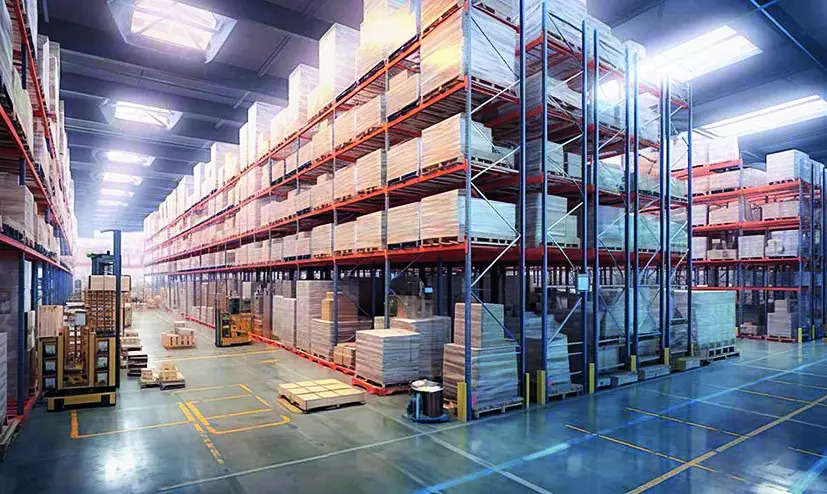
The appetite for speedy package delivery is skyrocketing around the planet. Americans do more than 15% of their shopping online, with digital purchases of groceries, shoes, pet food and other goods quadrupling over the past decade to USD 1 trillion a year. Global e-commerce is expected to grow at more than twice the rate as offline purchases, and, by decade’s end, 25,000 packages will be shipped every second, according to an analysis by environmental group Stand.earth.
All of this comes with a hefty climate footprint. FedEx Corp., United Parcel Service Inc. and DHL Group, three of the world’s larger delivery companies, combined to emit 92 million tons of heat-trapping gases in 2022 — more than the entire climate footprint of Greece. The industry’s emissions will likely grow as demand for last-mile delivery is expected to climb 78% by 2030, according to the World Economic Forum.
Delivery giants have promised for years to clean up their operations. Amazon.com Inc. vowed to make half of all deliveries with zero carbon pollution by 2030. UPS pledged to cut ground transportation emissions by 12% by 2025. And FedEx announced it would buy thousands of electric delivery trucks.
Although there are signs of progress — DHL and Amazon have blown past competitors to deploy the most electric delivery trucks in Europe and the US, respectively — delivery companies have scaled back many climate pledges and the industry isn’t keeping pace with climbing emissions from the global surge in deliveries.
Amazon eliminated its 2030 goal and is instead promising to achieve carbon neutrality by 2040. UPS scotched its 2025 emissions-reduction pledge. And FedEx’s emissions continue to rise as its EV deployments trail many of its competitors.
“Of course we can change faster,” says Angela Hultberg, global sustainability director at Kearney, a management consulting firm, and the former head of sustainable mobility at Ingka Group, which operates most Ikea outlets and saw its online orders spike during the pandemic. Ingka Group made 25% of its home deliveries with zero-emission vehicles last year. “We just don’t have that sense of urgency yet to change that fast. We’re still on the timeline of, ‘Does this make financial sense?’ And ‘when will we see cost parity?’”
Most delivery companies defend their performance. A dramatic shift will require lots of capital. The upfront cost of electric trucks can be at least USD 20,000 more than gas-powered alternatives. And although fueling a truck with electricity is cheaper, it’s unclear whether delivery companies can recoup that extra cost in many markets.
“We know the industry is a brown industry. It’s not easy to be green,” says Yin Zou, head of corporate development at DHL, which has committed to putting 80,000 electric vehicles on the road by 2030. “We want to make sure we can sustain the financial model for doing this.”
Perhaps a bigger headache is the charging infrastructure. Installing thousands of chargers to power up the trucks might take years and could cost another USD 5,000 per vehicle, according to some delivery companies. That cost escalates if the utility needs to upgrade the infrastructure to supply enough power to the depots.
“Our buildings are quite old,” says Chris Henry, director of the national fleet at Purolator, one of Canada’s largest delivery firms, which has vowed to electrify 60% of its fleet — or about 3,500 vehicles — by 2030. “We will have to upgrade the bulk of our electrical infrastructure to support this.”
Even with these challenges, some industry veterans are surprised that electric delivery vehicles haven’t taken off faster. Not only do they save money on fuel, they should also cost less to repair and maintain because they have fewer parts. “I don’t know why they aren’t doing more of this,” says Achim Kampker, professor of e-mobility at the University of Aachen in Germany and the former CEO of StreetScooter, which has produced tens of thousands of electric delivery vans in Europe. “It’s not a no-brainer, because there are some problems you still have to solve. But the electric vehicle is the best fit for last-mile delivery.”
FedEx was one of the first delivery giants to trumpet electric vehicles as a crucial climate fix. In an ad 12 years ago, featuring an animated FedEx electric truck ambling through an enchanted forest with pixie dust and singing animals, the company touted “more electric trucks” as part of its sustainable offerings. Since 2021, it spent over USD 17 million on two new US television spots showcasing its commitment to EVs, including one with country legend Willie Nelson, according to an estimate from iSpot, an ad measurement company. “We’re delivering for the earth by investing in more electric vehicles,” intoned the narrator in one ad as an electric truck emerges from an oversized FedEx box in a pristine forest.
But, despite the provocative imagery, FedEx has taken a cautious approach. EVs are critical to FedEx’s pledge to eliminate or offset all its emissions by 2040, which is a staggering challenge for a company that saw its emissions climb 25% from 2017 to 2022, and that uses 700 planes and 200,000 trucks to distribute packages all over the planet.
To help reach its lofty climate goals, the delivery giant set a near-term target that half of new vehicles purchased for its FedEx Express division would be electric by 2025. That would amount to adding several thousand new electric trucks per year. The company says it has “over 1,000” EVs on the road today, including 500 electric vans it added over the past two years from Brightdrop, a unit of General Motors. FedEx also announced two years ago that it has “reserved” another 2,000 Brightdrop vans “over the next few years.”
This appears to put FedEx behind its 2025 goal. Company officials push back on this, emphasizing they’re in the midst of a years-long transformation of their delivery network that will improve efficiency and lower emissions. They add that FedEx has made large strides in its environmental performance, such as a 49% reduction in emissions per dollar of revenue from 2009 to 2022.
“Electrifying a global fleet like ours is a significant undertaking, and one we remain committed to pursuing,” Mitch Jackson, FedEx’s chief sustainability officer, said in a written statement. The company’s approach, he added, must factor in everything from vehicle manufacturing to the energy infrastructure at its different locations. “We remain focused on the work ahead to decarbonize our operations and are constantly assessing avenues for future electric vehicle deployment,” he said.
FedEx isn’t the only company struggling to ramp up its EVs. UPS pulled back from its earlier goal to cut ground transportation emissions by 2025 due to the surge in e-commerce orders during the pandemic. It’s now aiming to cut the climate footprint of each delivery in half by 2035 and it has described “fleet electrification” as critical to its efforts. UPS won’t disclose how many EVs it has deployed, but it has struggled to boost these numbers due to what it calls a lack of supply. In 2020, for instance, UPS invested in Arrival SA, a European EV startup, and committed to buy 10,000 of the vehicles, but Arrival has since run into financial troubles.
“We’re talking to everyone,” says Laura Lane, chief corporate affairs and sustainability officer at UPS. The problem, she says, is that there’s an “insufficient supply” of EVs in the sizes that UPS needs. UPS, meanwhile, has focused on building a fleet of 15,000 trucks powered by natural gas, including “renewable” gas derived from landfills and dairy farms, which helps lower its carbon footprint, says Lane.
Travis Katz, the former CEO of Brightdrop, who ran the GM unit through last year, said he’s not surprised by the cautious approach taken by many delivery companies. Electric trucks need to be operated and managed differently than their diesel counterparts. The companies need to plan their routes differently. They need to hire different people to service the trucks. “The reality is there’s a very, very steep learning curve that all the delivery companies are having to go through right now,” says Katz. “They’re still wrapping their heads around what it’s going to take to run these things at a fleet-wide level.”
Some companies are pushing ahead more aggressively. DHL, for instance, boasts over 29,000 electric vehicles, most of which are in Europe. This amounts to about 32% of its delivery fleet. Most of these EVs are produced by StreetScooter, which began as an academic project before DHL acquired the vehicle maker in 2014. The delivery company then operated StreetScooter at a loss for more than seven years, until it sold the unit in 2022.
“StreetScooter shows how determined we are in this market because, when we bought it, there were no available models for the electrification of vehicles,” says DHL’s Zou. “We now have plenty of choices, unlike ten years ago.”
Meanwhile, in the US, Amazon has blown past other delivery companies by deploying 10,000 electric delivery vans from Rivian, with a goal to reach 100,000 by 2030. In Houston, alone, the company now operates 1,400 Rivians, a figure that eclipses the entire electric fleets of many other delivery companies. To power these vehicles, the company has installed over 12,000 stations at 100 locations around the US, according to the company.
“It is absolutely remarkable,” says Hari Nayar, vice president of sustainability and fleet electrification at Merchants Fleet, which manages over 200,000 vehicles for its clients. “Amazon has the single largest private EV fleet in the United States.”
But even market-beating efforts like this appear to lag behind what’s needed for the climate. Even if Amazon can get to 100,000 electric Rivian vans by 2030, this progress will be swamped by the expected growth in the company’s business, with the clean vehicles handling only about 20% to 30% of Amazon’s projected deliveries by then, according to Stand.earth.
“These companies can and should be doing a lot more,” says Victoria Leistman, a senior campaigner at Stand.
Amazon officials disagree with the environmental group’s assessment, calling its data “unverified.” The company says it has put over 15 different models of electric vehicles on the road and is also exploring other “carbon-free” fuel sources. “We’re incredibly proud of our progress so far, and will continue to work to reduce emissions in our transportation network,” said Tom Chempananical, director of Amazon’s global last-mile fleet, in a written statement.
Some local regulators around the world have begun to ratchet up pressure to force delivery companies to move faster. Cities like Shenzhen and Rotterdam are enacting so-called “zero-emission zones” for freight or delivery vehicles, which allow only clean trucks to enter certain parts of the city. Portland, Oregon, meanwhile, hatched the first such mandatory pilot project in the US, which will allow only zero-emission vehicles to park at commercial loading zones in a downtown neighbourhood.
California, meanwhile, has taken perhaps the most muscular approach with its recently-crafted Advanced Clean Fleets regulation, which will require large fleet operators — including package-delivery companies — to use far more zero-emission vehicles. The rule gives companies a couple of different pathways to comply, but one likely to be used by delivery companies would require them to go from at least 10% clean vehicles in the state in 2025 to 50% by 2031 and then 100% by 2035.
Some longtime industry insiders say a mixture of incentives and penalties will be needed to get delivery companies moving forward more quickly.
“Businesses aren’t going to do something unless they have to,” says Scott Phillippi, who oversaw fleet maintenance and engineering for UPS until 2021. “You can have an executive say, ‘I care so much about greenhouse gases,’ but, at the end of the day, unless it hits them from a financial standpoint, it’s not going to matter.”

